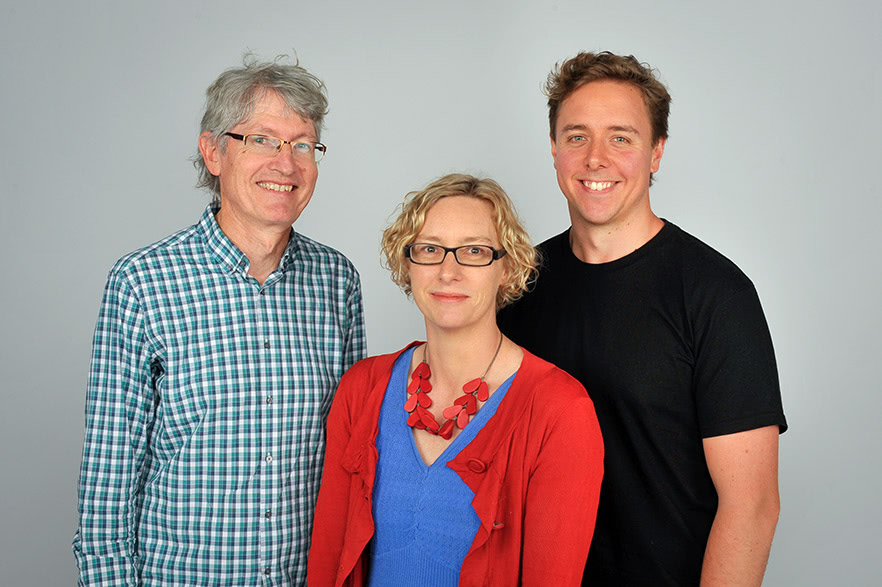Healthier transport

UOW researchers (from left): Associate Professor Michael Keall, Dr Caroline Shaw and Ed Randal: They have shown the health benefits of sustainable transport planning.
Using sustainable transport – cycling, walking and public transport – improves the population's health, mainly through increased physical activity, but also by reducing air pollution and the road toll.
New research has shown that local councils and urban planners could dramatically improve health and save lives by improving options for long-term sustainable transport in New Zealand cities. Our cities' infrastructures are a result of decisions made by local councils over recent decades, reflecting different urban planning priorities.
A study led by Dr Caroline Shaw, University of Otago, Wellington (UOW), set out to quantify what would happen if Auckland, Tauranga, Hamilton, Christchurch and Dunedin had the same levels of sustainable transport as Wellington, which has the highest levels of New Zealand cities.
Using the internationally recognised Integrated Transport and Health Impacts Model, which was developed in the UK and adapted to New Zealand, the researchers found considerable health and carbon gains if the other five cities could reach the same sustainable transport levels as Wellington.
For example, if Auckland caught up with Wellington, there would be about 57 fewer premature deaths each year and 20 per cent lower carbon emissions from cars and other light vehicles. Similarly, Tauranga and Hamilton would have 50-52 fewer premature deaths each year and 27-32 per cent lower light vehicle carbon emissions respectively.
“Although Wellington provides a healthier urban form than other cities, all our cities could do better,” Shaw says. “Overall New Zealand has a highly car-dominated transport system and the health costs of preferentially funding infrastructure for cars are high.”